Lake Louise. Photos: Trepiaks.
We end the 2025 Sprint reports with our final national park tour – Banff National Park in Alberta, Canada. Also, at the end of the report we will reveal the winner of the Sprint Guessing Game.
National Park #10: Banff in Alberta, Canada
The biggest draw to Banff National Park is Lake Louise, a lake like no other, nestled in the Canadian Rockies with water whose rich turquoise color seemingly defies explanation. “Beautiful” falls far short of describing the majesty and elegance of this place. Pictures can capture only a fraction of the glory that you see in person. And words cannot do it justice either. We will try to give you pictures and words that will at least convince you to put a visit to Lake Louise and Banff National Park high on your bucket list.
Ask 10 Americans to describe Lake Louise, and nine will say “beautiful.” Face it, Americans like to take the path of least resistance. Since I suffer from the same linguistic handicap, I decided to ask international visitors at Lake Louise to give me their best words to describe Lake Louise. Collectively, the descriptive words that represent 15 countries and six continents offer the scope and magnitude of the Lake Louise experience. Here we go: Amazing, Awe-Inspiring, Beautiful, Extraordinary, Fascinating, Glorious, Gorgeous, Grand, Heavenly, Incredible, Magical, Magnificent, Majestic, Marvelous, Mesmerizing, Mind-Blowing, Mysterious, Outstanding, Peaceful, Serene, Something You Need To See In Person, Spectacular, Splendid, Stunning, Wonderful, Unique, Unforgettable and Unreal. It is all that and more.
The best time to visit Lake Louise is between mid-June and mid-September. Before mid-June, the lake will likely still be partially frozen. After mid-September the chilly alpine winter begins to make its presence known.
Chateau.
It was my fourth visit to Lake Louise but my first since 1990. The Chateau Lake Louise is right on the lake, built by the Canadian Pacific Railway (CPR) in 1890. The CPR recognized it as a good tourist spot when the lake was discovered by one of its company explorers. The views from the guest rooms are unmatched. I stayed at the chateau in 1990 for about $150 a night. Today? That same room is $1378 a night. Plus a $45 daily resort fee. Plus a $55 daily parking fee. And you have to book a room far in advance.
But there is a much more affordable way to visit the lake. We stayed four nights at the Lake Louise RV campsite, just three miles from the lake. We booked it through the Parks Canada Reservation Service for $26 a night. There are also some minimal campfire and reservation fees. You put your dates in a queue, and the reservation service will notify you when the dates are open to book. We put our dates into the system in December and were notified on Jan. 24 that the reservations were open. As a bonus, the Canadian government passed an initiative to reduce fees and waive Banff admission fees between June 20 and Sept. 2, giving us a 25 percent refund on the campsite and free entry into the park.
PREVIOUSLY:
All dispatches from the Sprint can be found at this link.
Getting a place so stay is just half the battle. Finding a place to park when you get there has become a challenge. Attendance at Lake Louise has steadily increased since my last visit, increasing about 30 percent per decade with a sharper increase in the last six years. We heard two theories on why attendance has spiked in recent years. One theory is that social media and its influencers have spotlighted Lake Louise, creating the desire to visit. The second theory is that Covid denied the travel-happy Canadians the opportunity to leave the country, so they began to travel more in their own country. And they liked what they saw! It’s probably a combination of both theories. We ran into many Canadians from the Quebec province which seemed to support the Covid theory. Okay, back to parking.
About 16,000 people visit Lake Louise on a typical summer day. The hotel built its own parking garage about 20 years ago to take care of the guests in its 539 rooms. The Lake Louise lakeshore parking lot is limited and spaces, at a cost of $36.75 for the day, are usually filled by 6 a.m. (That’s in addition to the daily park pass fee of $22.) Your best parking choice is to use the shuttle service that goes to both Lake Louise and Lake Moraine. It’s a park-and-ride service that begins about six miles from the lake. The catch is that you must book it in advance. Use the same reservation service that is used for the campsites. Shuttles can be booked starting April 16. Don’t wait, even though a limited number of shuttle spots are released 48 hours before the desired departure date. We tried the 48-hour option and could not book one, likely because our internet service was too slow. Parking at the park-and-ride site is free, and shuttles are reasonably priced at $8 per person, $4 for seniors, and no cost for those 17-and-under. The shuttle operates every 30 minutes from 6:30 a.m. to 6 p.m., with the last return bus departing at 7:30 p.m. The shuttle service also includes the “Lake Connector” shuttle, which provides access between Lake Louise and Moraine Lake. Parking is free at the Lake Louise lakeshore parking lot after 7 p.m.
Lake access / parking option No. 2 is to take a bus from the city of Banff which is 40 miles away. It costs $7 and takes 47 minutes each way. You can park for free at the train station (if it’s not already full), then walk about seven minutes to catch the bus. The problem with this plan is that if you are at the Lake Louise campsite, you will have to drive 40 minutes to Banff, then take a bus for 47 minutes to go back to the lake, return to Banff by bus for 47 minutes, then drive back to the campsite with another 40-minute drive. Option No. 3 is to book a tour that will take you to both lakes. But the tour pickup point is the Banff train station, giving you the 40-mile back-and-forth drive again. Option No. 4 is to make a reservation at one of the chateau’s restaurants, and park at the hotel for $55. The moral to this parking dilemma is to book your shuttle tickets in advance. A three-mile hike from the campsite to Lake Louise via Lake Louise Drive is ill-advised because it is on a steep incline with constant traffic, mostly people driving to find the parking full then doubling back.
We booked a tour for one of our days, and we do not recommend it unless all other parking options fail, and you are desperate for lake access. The gist of the tour, besides a few tips on what to do if you encounter a bear, was to drop off the people in the van at Lake Louise for 90 minutes, then drop them off at Moraine Lake for 60 minutes. The rest of your half-day tour is spent in the van, driving back and forth to Banff. The van and bus tours all offer a limited time at the lake, from one to two hours. It was sad to see people rushing about the lakeshore, trying to get in a hike and some photos before rushing back for their departure time. Take your time, people! Book your shuttle! I mean, we spent two hours one day just asking people for a word to describe Lake Louise. That was the day we booked an Afternoon Tea at the chateau and coughed up the $55 for parking.
There is plenty to do at Lake Louise, some of it for a price. Canoe rentals are available at the Boathouse at Lake Louise for $150 per half hour. Horseback riding is available from Timberline Tours, featuring rides from two hours ($170) to eight hours ($365). There are several hiking options, all free! An easy, flat walk around the lakeshore takes about an hour, a moderate climb up switchbacks to the historic Lake Agnes Tea House is just over two miles, and a longer, more challenging hike (6.5 miles) leads to the Plain of Six Glaciers Tea House. Or you can take a quick polar-bear dip in the lake. (We saw a few hotel guests do this, with their plush robes at the ready.)
Moraine Lake.
A few words about Moraine Lake, which is about nine miles south of Lake Louise. Our tour guide tried to make a case that Moraine Lake is more beautiful than Lake Louise. That’s like saying Jermaine Jackson, not Michael Jackson, was the true King of Pop. Yes, Moraine Lake is worth visiting and is impressive on its own merit. But it is just a shadow of Lake Louise in magnificence. Personal vehicles are not permitted at Moraine Lake, only shuttles, buses and guided tours can park there. Moraine Lake is closed in the winter months (October to June). It is not as large as Lake Louise but it also has the stunning turquoise waters and a backdrop of mountains.
About those turquoise waters. Here’s the story behind the color, believe it or not! Movement of the glaciers grinds the rocks beneath it into a powdery silt known as rock flour. As the ice melts, the water carries the rock flour into the lake but it’s so lightweight that it doesn’t sink. As sunlight hits the lake, water absorbs the longest wavelengths of the spectrum (red, orange and yellow), and the shorter wavelengths (green and blue) reflect back. Due to their size, rock flour particles absorb some of the blue, so the more rock flour there is, the greener the water looks. Voila, turquoise water! That’s their story, and they are sticking to it.
Icefields Parkway.
Banff is more than just a couple of spectacular lakes. Icefields Parkway, a road that connects Lake Louise and Jasper National Park, is considered one of the most scenic highways in the world. The many stops along the 143-mile glacier-lined highway include lakes, canyons, waterfalls, rivers, forested valleys, and many hiking opportunities. If you are a hiker, you will want to spend two full days exploring the parkway. Take a full day driving to Jasper, spend the night, then take another full day driving back – taking time each way to stop, see and hike. We did a one-day journey, driving just over halfway to Jasper with a lot of stopping and seeing and just a little bit of hiking.
Peyto Lake.
The key stops for us along the parkway were Bow Lake (23 miles from the start), Peyto Lake (4.5 miles from Bow Lake), Mistaya Canyon (9 miles from Peyto Lake), Weeping Wall Viewpoint (32 miles from Mistaya Canyon) and Bridal Veil Falls (4.5 miles from Weeping Wall). Bow Lake and Peyto Lake each have the turquoise-sheen from the glacier rock flour. Bow Lake is by the side of the road but to see Peyto Lake takes a bit of a commitment. It’s about a half-hour hike up a steep hill on a paved boardwalk to reach the Peyto Lake lookout point. There you will look down on the lake without any lake access. Still, definitely worth the extra effort. At the lookout there is another two-mile trail that will take you to the Bow Summit Viewpoint. It has an elevation gain of about 1,000 feet and will take about two hours to complete. The route follows along a meadow which is also a favorite route for mosquitos, but the end result is a fabulous view of Bow Lake.
Mistaya Canyon.
To reach Mistaya Canyon you will trek along a rocky and muddy path of about a quarter mile. The canyon and the rushing Mistaya River were the highlight of the parkway for us. This is also a popular starting point for several scenic hikes: Sarbach Lookout (just over 3 miles), Glacier Lake (10 miles) and Howse Pass (16 miles).
Bighorn Sheep.
We encountered another wildlife traffic jam on the way to Weeping Wall and Bridal Veil Falls. A family of bighorn sheep decided they had the right of way and wandered down the middle of the highway. Unlike the bighorn sheep at Badlands who stayed hidden within the rocky backdrop, these sheep decided blending in was not a priority. Our final stop was the waterfalls of Weeping Wall and Bridal Veil Falls. You can either see the falls from a distance or hike through rocky terrain to get a closer look.
On our return drive we were able to just enjoy the many scenic mountains and backdrops along the parkway without the distraction of finding our next stop. You must drive this parkway!
Wildlife overpass.
Speaking of scenic highways, the Trans-Canada Highway is a delightful way to see Canada’s major cities. The highway links all 10 Canadian provinces, linking them from coast to coast. It is 4,860 long and much of it passes through mountains and other scenic venues. There is even a website, transcanadahighway.com, that will help you plan the ultimate transcontinental road trip. One impressive feature of the highway is that tunnels and overpasses were built into the infrastructure, not for cars but for wildlife. You will periodically drive through tunnels on the highway where the overpass is covered with trees and vegetation. This makes for a much safer route for both the wildlife and the motorists.
We will end our Banff review with a few things that stood out as Canadian oddities to us. There are almost as many A&W Restaurants as there are McDonald’s. And even more A&Ws along the Trans-Canada Highway. … Costco in Canada does not take Visa. (Fortunately, almost everywhere else does.) … Beware the amateur money-changers! Twice we had establishments that did not take credit cards offer us a 1-to-1 exchange from U.S to Canadian dollars. One was an RV Park where the next person waiting to check in was happy to give me $130 Canadian for $100 U.S. By the way, when you use a credit card, the banks use the latest currency exchange-rate to figure out your charge. … Canadians are extremely courteous drivers. When there is a merge or double-merge lane, everyone merges immediately and no one speeds past everyone in the merge lane to try to squeeze in at the merge-point. We found this approach to go much more quickly and smoothly.
BANFF STATS: It is 2,564 square miles. There are more than 1,000 miles of hiking trails. In 2024 there was an average of 11,589 visitors a day.
The Sprint Guessing Game Winner
The correct answers to the guessing game were 15+ wins for the home team (16), “yes” to seeing a complete game, average attendance between 29,000 and 31,000 (29,184), average length of game between 2:35 and 2:40 (2:38), and “no” to seeing license plates from all 50 states. (We saw the 49th state in Detroit on June 24.)
Two participants in the guessing game – Moosey and Charles Mc – tied with three correct answers out of five. The tie-breaker was to guess how many total miles were driven on The Sprint. Moosey guessed 12,878. Charles Mc guessed 15,675.6. Total miles: 16,175. Charles Mc is the winner!
Final Note
As we were nearing the end of The Sprint – more than 16,000 miles driven over 100 days – we recognized that we would return home just before our wedding anniversary. I asked my wife what she wanted to do for our anniversary and her response showed that my bent toward sarcasm has worn off on her. She said, “We should go on a road trip!”
###
Tom Trepiak is the former sports information director at Humboldt State and a member of the Cal Poly Humboldt Athletics Hall of Fame.

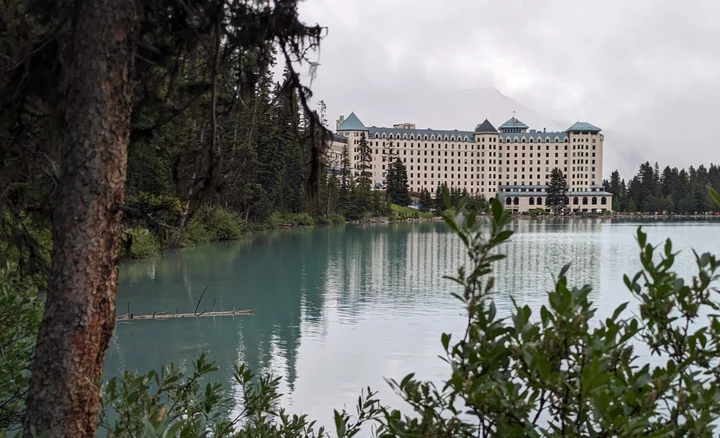
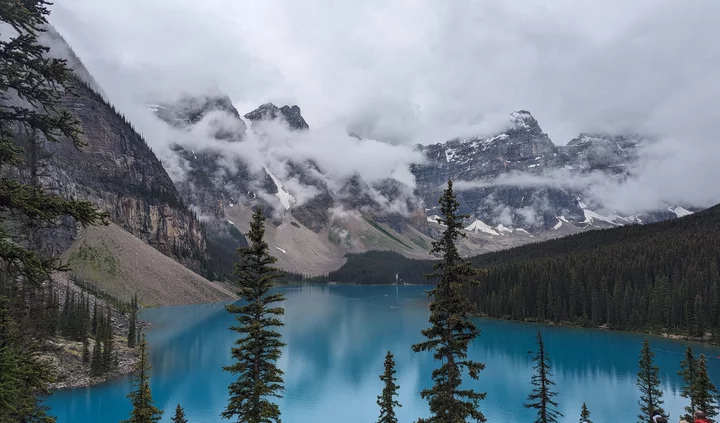
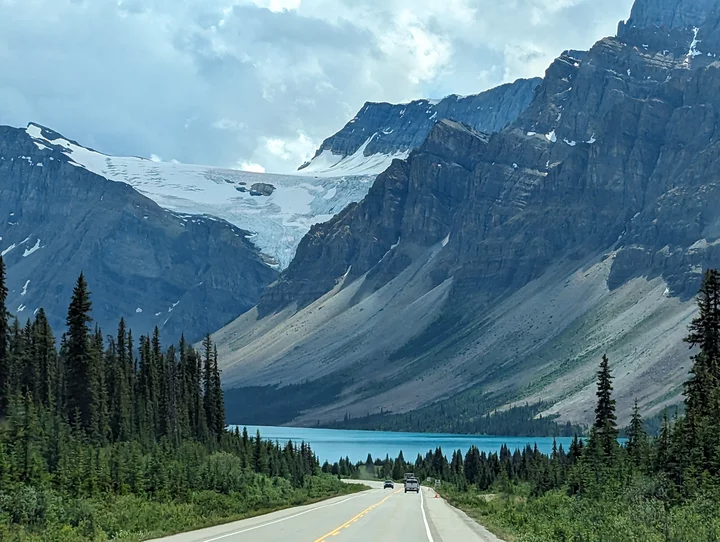
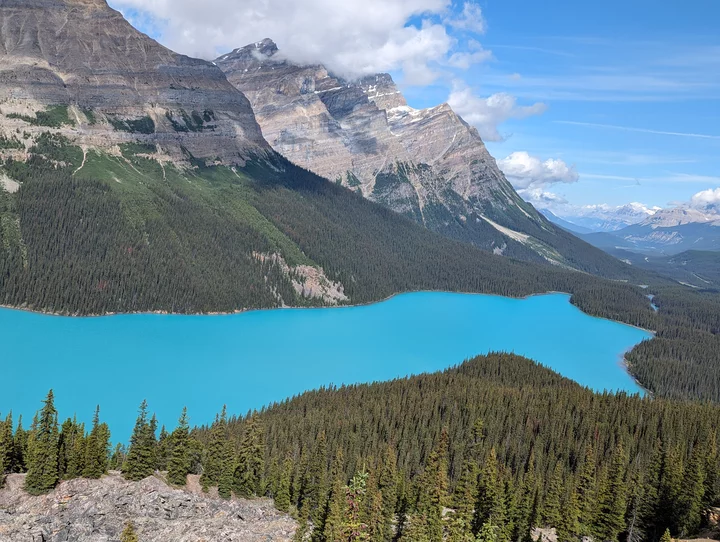

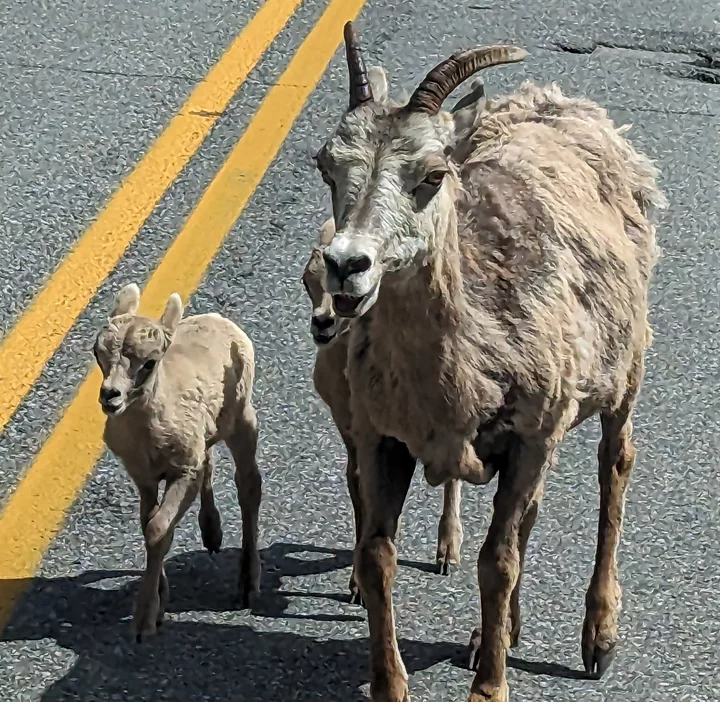
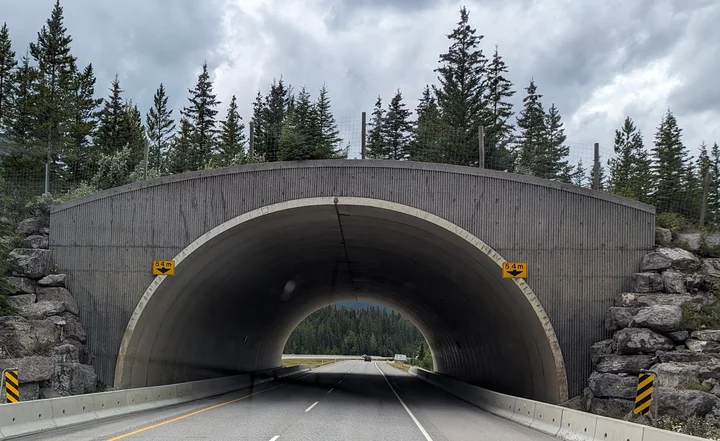
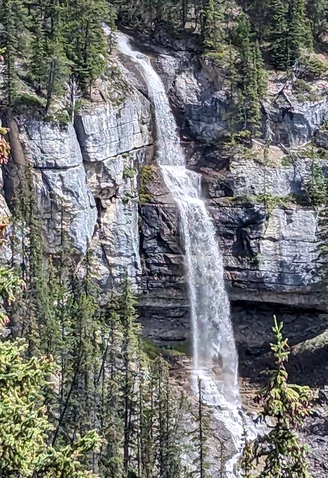
CLICK TO MANAGE